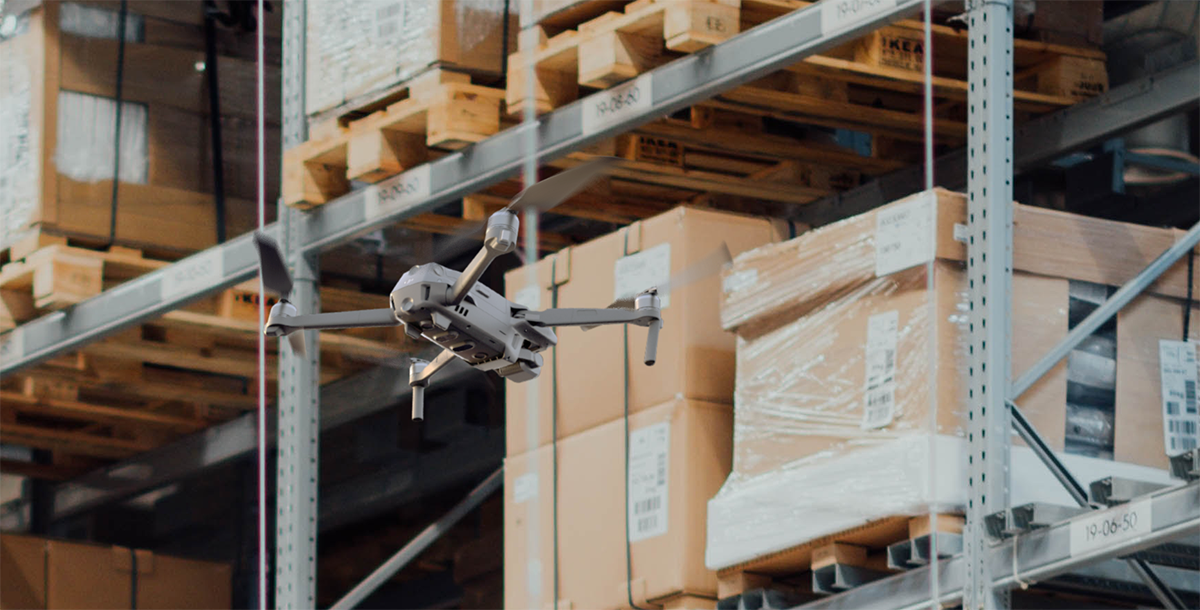Leveraging the Use of Technology for Stock Counting

In order to ensure an efficient warehouse operation, the stock records have to be accurate. To this end, companies need to carry out regular stock checks as mistakes do occur and these need to be identified as soon as possible in order not to compromise the order picking operation.
All warehouses are obligated to undertake some form of stock count. It depends on the law of the country and the accounting requirements as to how frequent and comprehensive the counts are. Germany is one example of a country that insists on a full, annual physical stock count.
There are a number of ways that companies can count stock and a number of tools are available to assist in this process.
1. Left on location checks
As operators pick items from a location for an order, they can be prompted to count the remaining items in that location.
This can only work in real-time. Operators can be prompted by their voice or hand-held scanners to count the remaining items in the location once that part of the order has been picked. This quantity can be compared with the expected stock figure and if correct, the operator can continue to the next location. If the quantities don’t match, they may be prompted to count again.
There are drawbacks to this method. Firstly, it can slow down the pick operation which could be crucial when deadlines need to be met. Secondly, if operators are picking with paper pick-lists they might not be picking in the order that the pick-list was released. Therefore, in order to work, this has to be undertaken in real-time.
An alternative to the operator having to count again is for the system to alert a supervisor who can act on the discrepancy. Note that not every location on an operator’s pick run has to be checked. The locations to be counted can be allocated based on a specific algorithm.
The introduction of “vision picking” should allow the system to capture an image of the stock ‘left on location’ and therefore reconcile with the system.
2. Cycle counts/perpetual inventory count
Cycle counts can be carried out by stock controllers or warehouse operatives. A stock controller can be given a list of locations to count and they will undertake this when the pick and replenishment operations have been completed.
An ABC analysis based on frequency of pick can be used to identify the items to be counted each day or each shift. The most frequently picked items are those which are likely to show more errors as their locations are visited more often. Using the Pareto principle where, on average, 20% of line items produce up to 80% of the orders, counters can concentrate on the “vital few”, i.e. the most popular 20% of line items.
For example, during one week, 8% of A items (fastest movers), 4% of B items (medium movers) and 2% of C items (slow movers) can be counted which ensures that all items in the warehouse have been counted at least once in the year. These percentages can be increased if greater accuracy is required and there are sufficient staff available.
A cycle count can be sufficient to satisfy the auditors if all locations have been visited at least once during the year. This should negate the requirement for a total wall to wall check.
3. Wall to wall counts
Utilizing own staff
Many companies still rely on a total stock count of all the items in the warehouse. Some companies will undertake a single annual count whilst others might count the whole warehouse quarterly or even monthly depending on auditor requirements and the accuracy, or at times, inaccuracy during picking and counting.
A full stock count usually necessitates the closure of the warehouse for a period of time when all inbound and outbound movements are suspended. A significant drawback of a single annual count is the difficulty in reconciling the discrepancy as it could have occurred over 11 months ago. The count is normally carried out at the company’s year-end.
The main drawbacks include the time required to undertake the count, the suspension of stock movements and the time to reconcile the stock discrepancies once the full count has taken place.
Utilizing third-parties
There are a number of companies that employ specialist third-party contractors to undertake these counts. This provides a totally independent result. Drawbacks with this method are the unfamiliarity of the stock for the counters involved together with the additional cost.
Stock count essentials
All stock counts require organizing. You need to know who will undertake the stock count, what you are planning to count, when you plan to undertake the count, what tools and equipment you need and the timescale allotted.
For example, items that require measuring or items that need to be brought to ground for counting will take much longer than counting in situ.
If you are counting at height, you will need to ensure the safety of the warehouse staff. If you are using forklift trucks a suitable safety cage and harness need to be provided. Under certain health and safety legislation and company rules, the use of cages on forklift trucks is deemed unacceptable and therefore specialist equipment is required such as elevated work platforms (cherry pickers). Portable scales for counting items such as nuts, bolts and fasteners for example are a necessity.
Prior to the start of the count ensure that all items have been put away in their correct location and try to despatch as many items as possible prior to the stock take. Secondly, ensure that any obsolete units are disposed of before the start of the count. There is no point in counting stock that shouldn’t be in the warehouse.
One important point to note is that when reconciling the stock from an operational point of view, this should not be done by comparing the stock value in the system with the physical stock value.
Although this can be acceptable from an accounting perspective it can be a nightmare from an operational point of view.
For example, an acceptable 0.5% discrepancy in value can hide a significant number of issues as follows:
- Missing stock
- Stock in the wrong locations
- Incorrect number of items in a location
- Orders not despatched
All of these can have a significant effect on warehouse operations and customer satisfaction.
Stock counting tools
In order to undertake an accurate perpetual inventory count or total stock take, warehouses require a number of tools at their disposal.
Those companies which have yet to introduce a modern warehouse management system will rely on paper-based systems and sufficient staff to count the stock and record the details on a spreadsheet to compare the system stock with the physical stock. This is time-consuming and prone to error.
The introduction of technology into warehouses not only speeds up the process but also provides greater accuracy, real-time results and as a result, strengthens data security and assists companies with Sarbanes-Oxley (SOX) compliance.
Many warehouse management systems (WMS) have specific modules to manage the stock counting process. Staff equipped with scanners, voice or vision systems will be able to count in real-time and produce instant results.
In today’s technologically advanced world we are seeing the introduction of drones to assist companies in counting their stock. These unmanned autonomous vehicles (UAV) are still in their infancy. There are a number of advantages, not least the reduction in staff levels.

Stock counting drone - supplied by Flyware
These UAVs are ideal for counting one deep, full pallet, single sku locations. They can also be used to identify empty locations and confirm correct put-away.
They do, however, require pallets to be labelled clearly with front-facing bar codes.
They can also be used in chilled and frozen environments and in very narrow aisle racking where ground operated fork-lift trucks, as opposed to VNA Turret trucks, are used.
FlytWare has recently introduced the use of these drones into an IAG facility in Spain.
Given the relatively high frequency of pallet movement and the wide variety of barcodes in an air cargo warehouse, inventory scans using drone fleets can be an ideal solution for fast, high-frequency, cost-effective cycle counts.
In order for these drones to operate efficiently there are a number of requirements:
- Out of hours operations or segregated areas
- Automatic triggering of overhead, motion-activated lights
- A comprehensive indoor radio frequency (RF) range
- Operational improvements to ensure all pallet barcodes can be successfully read
- Optimal location of the ground station and charging pads for the drones
There are a number of disadvantages however when it comes to counting boxes on part pallets, opened cartons and poorly labelled products.
These disadvantages can be overcome by the introduction of RFiD tags applied to each item however cost remains an issue with very few companies adopting comprehensive tagging of individual items. Secondly, overlapping tags, the presence of liquids and metal can also affect accuracy.
Stock counting in one form or another will continue to be a requirement going forwards however life will become easier with the introduction of technology such as vision systems operated by humans or machines.




